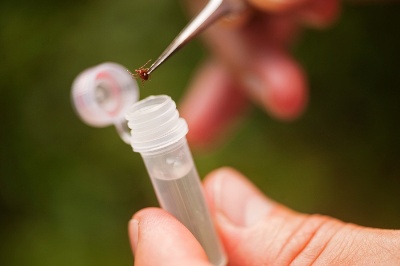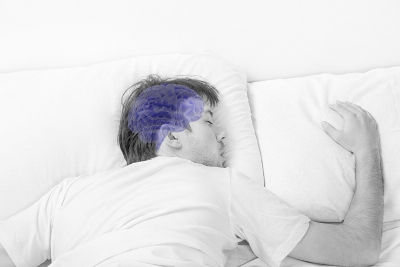Health


When Danish researchers asked achy people to jazz up their diets with ginger, it eased muscle and joint pain, swelling and stiffness for up to 63 percent of them within two months. Experts credit ginger's potent compounds called gingerols, which prevent the production of pain-triggering hormones. The study-recommended dose: Add at least 1 teaspoon of dried ginger or 2 teaspoons of chopped ginger to meals daily.

لندن: امراض قلب اور فالج کو ہو دور بھگانا تو ایک سیب ہے روزانہ کھانا، جی ہاں یہ نعرہ ایک نئی طبی تحقیق میں سامنے آیا ہے۔
برٹش ہارٹ فاﺅنڈیشن اور آکسفورڈ یونیورسٹی کی مشترکہ تحقیق کے مطابق 50 سال یا اس سے زائد عمر کے افراد روزانہ ایک سیب کھائیں تو وہ مختلف امراض سے اپنی موت کو ٹال سکتے ہیں۔
تحقیقی ٹیم کے قائد ڈاکٹر ایڈم برگس کے بقول اس سے ثابت ہوتا ہے کہ غذائی عادات میں معمولی تبدیلی بھی کس حد تک موثر ثابت ہوسکتی ہے۔
اس کے علاوہ صحت مند طرز زندگی امراض قلب اور فالج کی روک تھام میں کس حد تک مددگار ثابت ہوتی ہے۔
تحقیق میں کہا گیا ہے کہ سیب میں اینٹی آکسائیڈنٹ اور ایک کیمیائی جز فلیونوئیڈ شامل ہے۔
جس کے استعمال سے امراض قلب اور فالج کے خطرے کو کافی حد تک کم کیا جاسکتا ہے۔

The debilitating tick-borne disease is well-documented north of the Mason-Dixon line, but does it exist beyond that?
Kerry Clark never wanted to show that Lyme disease exists in the Southern United States by catching it himself.
Clark is a medical entomologist at the University of North Florida in Jacksonville. A wiry man with graying brown hair, he is most at home in a kayak on the ponds behind the wooded Jacksonville campus. He jogs and lifts weights, when he is well enough to do so.
Clark has spent years all over the South crawling through underbrush and kicking up leaf litter to collect ticks that transmit infections. Despite innumerable tick bites, Clark never had a medical problem until the day he dragged for ticks in the town of Fayetteville, a suburb south of Atlanta.
Clark was giving a talk on Lyme disease at a gathering of the Dougherty County Medical Society in Albany, Ga., where he met Fayetteville resident Liz Schmitz, president of the Georgia Lyme Disease Association. When he heard how many people from Schmitz’s town had been sickened after tick bites, he agreed to come up and investigate.
As Clark dragged for ticks with a white flannel cloth on a pole, hungry, aggressive lone star females with their distinctive white spots seemed to burst out. In less than an hour, he had collected hundreds of adults and younger nymphs. He remembers one practically leaping from the cloth onto his finger. And that, Clark guesses, is when a lone star tick nestled in his hair. When Clark found it several days later, it had already deposited its bacterial load into his body.
Since that day almost three years ago, Clark has been suffering from what he describes as intermittent pounding headaches, fatigue, odd twitches and “fuzziness.” He reports that weeks-long courses of antibiotics make him feel better, but when he goes off the drugs, the symptoms return.
Clark is not alone. Other people from suburban communities around Georgia — and many other areas of the Southeast — report getting sick from what seems like tick-borne illness, too.
A man in his 50s from Fayette County who prefers not to use his name developed severe neurological symptoms after a tick bite. Initially his right foot dragged, and he couldn’t use his right arm at all. He was diagnosed with the lethal neurodegenerative disease ALS (for amyotrophic lateral sclerosis, also known as Lou Gehrig’s disease.) ALS gradually kills off motor neurons, causing progressive paralysis. It initially leaves patients weakened, then in a wheelchair, and then, within a few years, unable to eat or breathe.
The last specialist sent him home to die. But after talking with Schmitz, the man sent Clark samples of his blood. Using polymerase chain reaction (PCR) testing to analyze fragments of foreign DNA in the man’s blood, Clark found evidence of Borrelia burgdorferi, the pathogen that causes Lyme disease. Now on antibiotics, the Fayette County man says he feels better than he has in years, and the rapid downward trajectory common to almost all ALS patients seems to have stalled.
Clark also tested his own blood, where he found traces of B. burgdorferi along with another distinct genospecies (a bacterial species separated by divergence of genes), Borrelia andersonii, usually found in rabbits.
There is just one problem with this story: Many Lyme researchers, including some from the National Institutes of Health (NIH) and the Centers for Disease Control and Prevention (CDC), won’t believe a word of it. There is little or no true Lyme disease anywhere in the South, say these experts.
They cite plenty of evidence: In the Northeast, where Lyme is endemic, the disease is spread by nymphs (the tick’s juvenile form) of Ixodes scapularis, commonly known as blacklegged ticks. Blacklegged nymphs rarely bite humans down South, though researchers don’t agree as to why not. Adult blacklegged ticks do bite people, but because of their large size, they’re often noticed and picked off before they spread disease.
So if there is Lyme — or Lyme-like illness — in the South, what could be spreading it? The aggressive lone star tick, Amblyomma americanum, which frequently bites people as well as other animals, is a prime suspect. In the early 1990s, researchers realized its bite could cause a roundish, gradually spreading mottled red rash that was a virtual ringer for the erythema migrans (EM) rash, the classic signature of Lyme disease in the Northeast.
But since few Lyme experts believe that the lone star can harbor and transmit Lyme Borrelia, the rash the tick leaves upon biting is never attributed to Lyme disease. Instead, in the South, the illness is called STARI, for Southern Tick-Associated Rash Illness. According to microbiologist Barbara Johnson, one of the top Lyme disease experts at the CDC’s Division of Vector-Borne Diseases in Fort Collins, Colo., STARI is relatively benign, presenting only with the rash and flulike symptoms of early Lyme. Its cause remains unknown.
And this is where the CDC and researchers like Clark and his colleagues part ways: Clark recognizes that Lyme disease transmitted by blacklegged ticks is relatively infrequent in the South. But he believes that lone star ticks can transmit a similar spiral-shaped bacterium or spirochete to the one that causes Lyme disease.
Other scientists disagree. While strains of Borrelia burgdorferi can be found in the South, says Jean Tsao, a Lyme researcher from Michigan State University, there is no bridge between the natural and the human world. Instead, the disease cycles are “cryptic,” meaning the spirochetes cycle quietly among ticks and animal hosts but have virtually no effect on human health.
Getting to the truth here is critical — especially to the thousands of patients who believe they suffer from some form of Lyme disease acquired in the South. The confusion starts with the numbers. No one has any clear idea how many STARI cases exist because, unlike Lyme in the North, they are not reportable to state departments of health.
Gary Wormser, an infectious diseases physician at New York Medical College and a recognized Lyme researcher, says STARI is “pretty widespread in the Southeast and south central part of the country.” Yet, Adriana Marques, chief of clinical infectious diseases at NIH, launched a study of STARI in 2002, and enrolled only three suspected patients over 10 years.
But Marcia Herman-Giddens, scientific adviser for the Tick-Borne Infections Council of North Carolina, a research and advocacy organization, says she can’t believe anyone actively looking for STARI patients would come up with just three of them in a decade. Patients with Lyme or Lyme-like illness in the South likely number in the thousands, she says.
The dispute leaves Southern patients who insist they have Lyme disease — or something much like it — angry and adrift. Because few doctors recognize their illness, they say, they are treated too late or not at all, and are allowed to slide into chronic illness as debilitating as untreated Lyme disease in the North.

At a tiny bar in Paris’s Montmartre district, chef Elie Daviron is happy to admit his new menu has disgusted some clients while others need two or three drinks before they can face it. Amid the guacamole, chicken tikka and chili hotdogs, the young chef is conducting a “gastronomical experiment” with what he calls a selection of “insect tapas”. Grasshoppers, beetles, scorpions and two different types of worm—sango and silk—are the latest additions to his fare. “My personal favorite is the sango worm,” Daviron told AFP from behind the bar of the Festin Nu or Naked Lunch, a watering hole in this picturesque northern slope of the Montmartre hill.
“There are two textures…. you have the head and the body which are a completely different taste and flavor,” he said. The body was “sandy” tasting while the head was “crunchy” and tasted a bit like a combination of beetroot and mushrooms, he added. The 26-year-old from Montpellier in southern France became interested several years ago in the idea of how insects could in future be a common source of protein in Europe. And after the release of a UN report on edible insects earlier this year, he “realized that people were waiting for someone to do that”. Daviron ordered a selection from a company licensed to import dried insects and set about experimenting with recipes. The result was five dishes including scorpion with pepper cooked in olive oil, beetle with cucumber, ginger pickle and green peas and grasshopper with egg. The protein-rich insects are imported from Thailand where they are widely eaten as snacks. But due to limited demand in France the few licensed suppliers deal only in dried insects rather than frozen or fresh.
‘Disgust turns to satisfaction’
“They are dried and salted and the taste will be a bit related to that,” he said, adding that because they are dried they do not need cooking and so retain the appearance of the insect. “It will be fermented taste, mushroom taste, dried fruit taste, dried meat taste, dried fish taste, a lot of things around that,” he said. “The grasshopper will be more like hazelnuts and the giant water scorpions will be closer to dried fish,” he added. Student Laura Dandelot, 21, said she had to overcome her prejudices in order to try the scorpion. “At first, I did think it was disgusting and impossible to eat because it was strange and dirty,” she said. In fact, the scorpion tasted pleasant enough, she said, describing it as a bit “like nuts”, although she did not like the texture. “It was very hard to eat… crispy and hard,” she added. Adele Gaudre, also a 21-yearold student, said she liked the grasshopper.
“It was as if you were chewing on dried tea, it was really dry but very nice,” she said. The “insect tapas” are priced at between five and nine euros (seven and 12 dollars) per serving, and on a busy night the bar dishes up about 50 such plates. Daviron said in the two weeks since he put the insects on the menu he had witnessed a range of reactions from customers. “Some (people) are curious, some are disgusted, some are enthusiastic, some just don’t want to hear about that,” he said. “Some get into the game or maybe they wait (until) after one or two or three drinks to get started.” According to the UN’s Food and Agriculture Organisation 2013 report, insects although not eaten in Western nations form part of the diet of around two billion people worldwide, mainly in Asia and Africa. And Daviron said he was confident that in the long term other countries would overcome their reservations too. “The disgust is really turning into a fascination,” he said. “It is difficult to say how fast and in what form it will actually become an everyday event. “Maybe not tomorrow. It will take time… but it may be faster than we think,” he said.—AFP

Sleep doesn’t just clear your head. Scientists now say it literally flushes out waste and toxins that build up in your brain during the day. And your brain needs this beauty sleep more than you might think.
Neuroscientists peeked into the brains of conscious and unconscious mice using a technique called two-photon microscopy. When the mice drifted off, their brain cells actually shrank, expanding the spaces between them by 60 percent. That’s when cerebral spinal fluid flowed in and cleaned the pipes. As the Guardian explains,
During sleep, cerebral spinal fluid is pumped around the brain, and flushes out waste products like a biological dishwasher. The process helps to remove the molecular detritus that brain cells churn out as part of their natural activity, along with toxic proteins.
Plumbing in the Brain
This process is facilitated by the the glymphatic system, which the same group of researchers identified last year, as the BBC describes,
Their findings build on last year’s discovery of the brain’s own network of plumbing pipes – known as the glymphatic system – which carry waste material out of the brain.
Scientists, who imaged the brains of mice, showed that the glymphatic system became 10-times more active when the mice were asleep.
This plumbing system is specific to the brain, since toxin-flushing in the rest of the body is carried out by the lymphatic system, which can’t get its cleaning powers past the blood-brain barrier. And it’s an energy-intensive process, which is probably why you’ve got to be zonked out for it to work. As described in The Verge,
“You can think of it like having a house party,” says Maiken Nedergaard, the study’s lead author. “You can either entertain the guests or clean up the house, but you can’t do both at once.”
Sleep Matters
Housecleaning, as we all know, is a hassle. It’s time-consuming and exhausting and not always at the top of our daily priority lists. But in the case of the brain, it definitely should be. Putting off sleep and the cleaning that comes with it can have lousy longterm effects, according to the findings published in Science this week. The accumulation of waste products in the brain is thought to lead to Alzheimer’s disease and other forms of dementia. According to NPR,
One of the waste products removed from the brain during sleep is beta amyloid, the substance that forms sticky plaques associated with [Alzheimer's] disease. That’s probably not a coincidence, Nedergaard says.
“Isn’t it interesting that Alzheimer’s and all other diseases associated with dementia, they are linked to sleep disorders,” she says.
So in addition to keeping you bright-eyed and bushy-tailed, sleep will keep your gray matter in tip-top shape, too.
Image credit: Maltsev Semion / Shutterstock

1. Alfred Nobel considered himself a failure. After a newspaper’s premature obituary dubbed him “the merchant of death,” the inventor of dynamite set out to improve his reputation by establishing prizes in peace, literature and the sciences.
2. Only one scientist has won a Nobel for failing. In the 1880s, Albert Michelson tried to measure the “luminiferous ether” that scientists thought was the carrier of light. He couldn’t find it, because it didn’t exist. Michelson had inadvertently discovered that light carries itself, though it would take a patent office clerk named Albert Einstein to explain it. The short version: E = mc2.
3. Several scientific journals now specialize in publishing failed experiments, including the Journal of Negative Results in Biomedicine and the Journal of Articles in Support of the Null Hypothesis.
4. Getting scientists to fess up to failure ain’t easy. After just over a year, theJournal of Errology managed to attract only two papers and called it quits.
5. Google budgets for failure and its potential insight. Employees can spend 20 percent of each workday on their own projects even though 80 percent of Google ventures fail.
6. The first product manufactured by Sony, shortly after World War II, was an electric rice cooker. Handy, except that it undercooked or burned the rice. Failing to sell a single one, the company tried an even dicier new gadget: a tape recorder.
7. On average, 10 percent of U.S. companies go out of business annually.
8. And corporate extinctions follow a pattern: A low-level attrition rate is occasionally punctuated by many companies failing at once. The economist Paul Ormerod has found that the relationship between severity and frequency follows a power law — mass failure is exponentially rarer than everyday attrition.
9. The pattern seems to be natural. Over the past half-billion years, the extinction of species has followed that same power law.
10. Henry Ford’s Edsel was the dodo of automobiles, but Ford had far worse ideas.
11. His biggest failure? Fordlandia, a 2.5 million-acre rubber plantation in the Amazon. With characteristic efficiency, Ford planted rubber trees in tight formation. Fordlandia was efficient — as a buffet for caterpillars.
12. The nonprofit Search for Extraterrestrial Intelligence (SETI) has monitored the skies for alien communication for 53 years, and scientists have yet to hear a single word.
13. Talk about failure to communicate: In 1999, the $125 million Mars Climate Orbiter burned up in Martian orbit because navigation software used metric units while the thrusters were programmed to follow English measurements.
14. In case you’re thinking of signing up for Dennis Tito’s 2018 voyage to the Red Planet, better remember Biosphere 2, a prototype Martian settlement in the Arizona desert. Most of the animals went extinct, and the eight human inhabitants were nearly asphyxiated.
15. Biosphere 2 is now studied by environmental scientists to reckon why humans can’t maintain a sustainable environment on Biosphere 1, aka planet Earth.
16. One failure leads to another. The Three Mile Island nuclear power plant in Pennsylvania went into partial meltdown after someone spilled a cup of water.
17. The dumped water triggered a safety fuse, which shut down a coolant pump, causing the reactor to overheat.
18. Nobody noticed the overheating because the warning light was covered by a repair tag. D’oh!
19. The Large Hadron Collider suffered a catastrophic failure after just nine days when a solder connection melted, igniting a bottle of supercooled liquid helium. Fourteen months later, the LHC failed again after a bird dropped a piece of bread on some exposed electronics.
20. Scientists fretted that the repaired LHC would fail to find a Higgs boson, the missing piece in the standard model of physics. But finding a Higgs was the least of our problems. The measured value of the particle shows that the universe itself is unstable and — in perhaps a billion billion years — will fail just like everything else.


